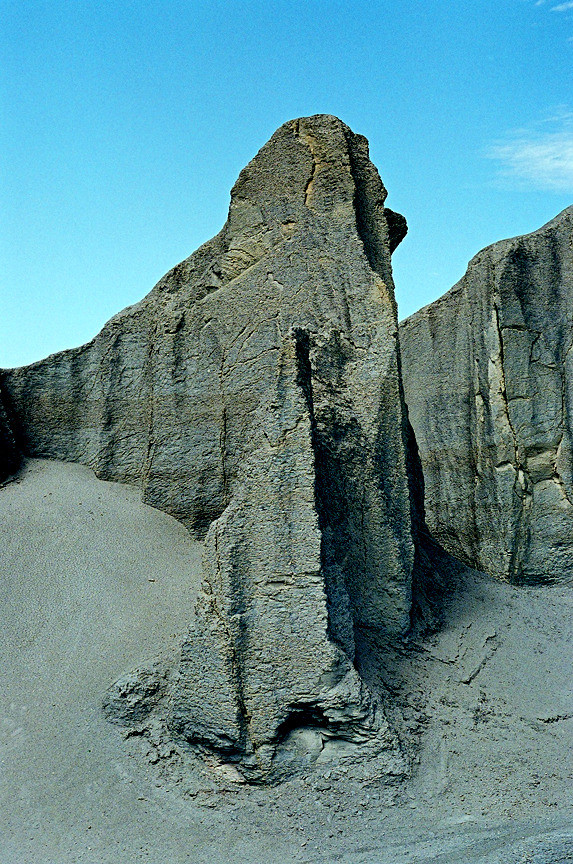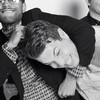Jim Mangan is an old friend of ours whose work has graced the pages of VICE over the years. While he usually spends his time wandering the dunes of the American desert, he was recently in New York City and stopped by the offices to say hi and give us a copy of his new self-published book, Bastard Child. We were like, "Hey, thanks, Jim Mangan! We really enjoy this book and your related series of photos from the Southwest, Time of Nothing. Say, could we ask you a few questions about them, then write down the answers, and then put it all on the internet so people can read what you have to say?" He said yes, so we did just that.
Advertisement
VICE: Your previous work featured humans in landscapes, but now you seem to have moved more toward documenting the landscape itself.
Jim Mangan: Almost all the images (three images represent California, Wyoming, and Nevada) were shot in the Utah desert, which to me, strictly from a landscape standpoint, is the most interesting place on Earth. I've spent so much time exploring these different areas in the southern portion of Utah—each has its own very unique qualities and aesthetics, and, ultimately, sort of present themselves as separate planets even though they're only 30 to 40 minutes away from one another. The imagery you see in the photos represents the places I kept getting drawn back to. Initially, I wanted to only see new locations, but as I searched I realized how special certain ones are. The more I kept going back to the same ones the more of connection I developed. I think if I was stripped of the privilege to spend time in these magical places it would be sort of like a girl I was totally in love with breaking up with me and never wanting to see me again—I would be totally devastated!I definitely have over the past few months been presenting more of my landscape images, but there are still more human/figurative projects on the horizon. Many of these photos are what inspired my Time of Nothing project, which is abstract landscapes shot over and around the Great Salt Lake, but there are quit a few that were used as inspiration shots for some of my figurative projects such as "Color'd" and "Bedu."
Jim Mangan: Almost all the images (three images represent California, Wyoming, and Nevada) were shot in the Utah desert, which to me, strictly from a landscape standpoint, is the most interesting place on Earth. I've spent so much time exploring these different areas in the southern portion of Utah—each has its own very unique qualities and aesthetics, and, ultimately, sort of present themselves as separate planets even though they're only 30 to 40 minutes away from one another. The imagery you see in the photos represents the places I kept getting drawn back to. Initially, I wanted to only see new locations, but as I searched I realized how special certain ones are. The more I kept going back to the same ones the more of connection I developed. I think if I was stripped of the privilege to spend time in these magical places it would be sort of like a girl I was totally in love with breaking up with me and never wanting to see me again—I would be totally devastated!I definitely have over the past few months been presenting more of my landscape images, but there are still more human/figurative projects on the horizon. Many of these photos are what inspired my Time of Nothing project, which is abstract landscapes shot over and around the Great Salt Lake, but there are quit a few that were used as inspiration shots for some of my figurative projects such as "Color'd" and "Bedu."
Advertisement
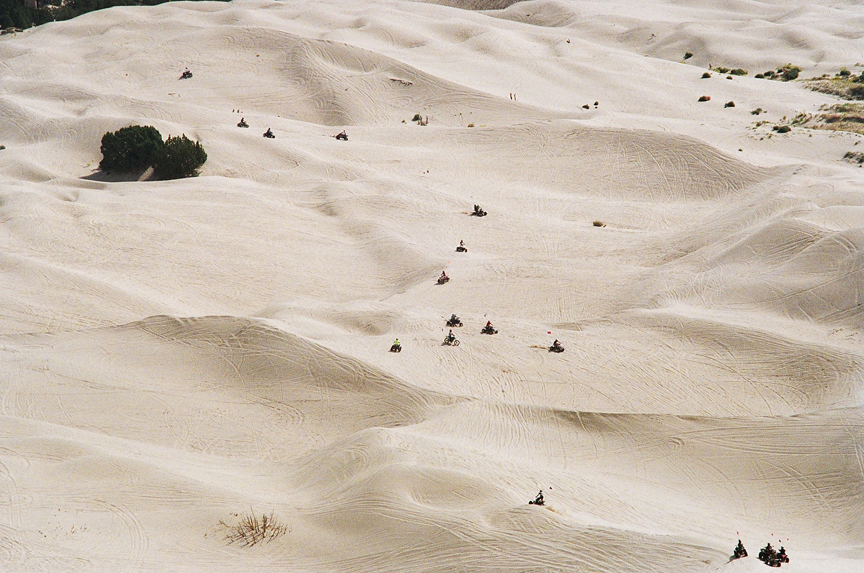
These images seem to show the effects of people imposing their will on the landscape by building roads, bridges, houses, etc. How do these actions by humans in nature play a role in the work? Is there an implied message?
First and foremost I wanted to emphasize the different layers and colors in these relatively desolate places, but, also, as I began to edit that image, I realized I wanted to emphasize that man is lurking and he's always ready to fuck shit up. Hopefully, this is a subtle reminder of that.There's one photo were you see a man standing in a shelter with polarized windows and he's looking out at the desert mountains in front of him. It speaks metaphorically to how many of us view the world from our computers, TVs, and phones.
First and foremost I wanted to emphasize the different layers and colors in these relatively desolate places, but, also, as I began to edit that image, I realized I wanted to emphasize that man is lurking and he's always ready to fuck shit up. Hopefully, this is a subtle reminder of that.There's one photo were you see a man standing in a shelter with polarized windows and he's looking out at the desert mountains in front of him. It speaks metaphorically to how many of us view the world from our computers, TVs, and phones.
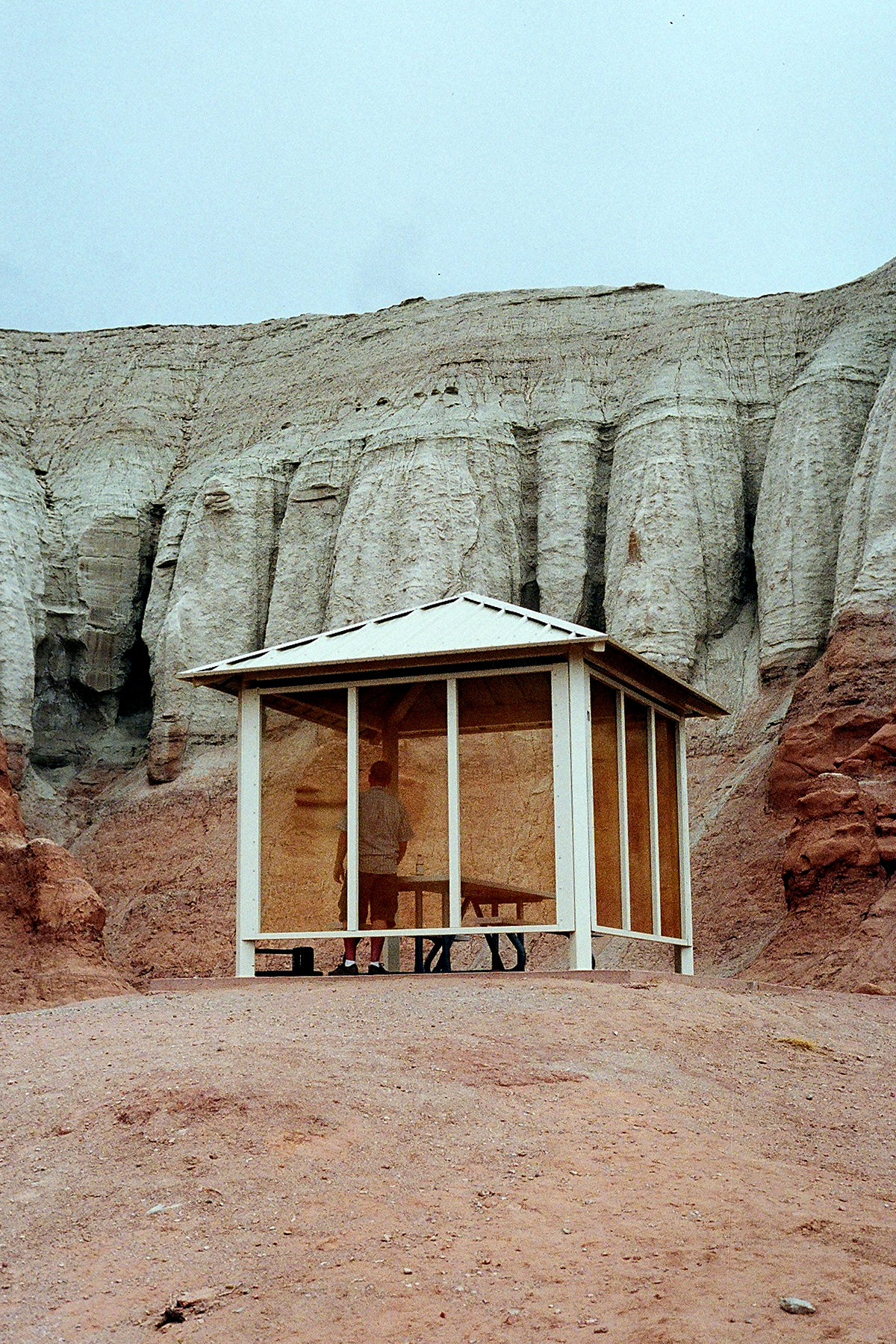
How did the work in Bastard Child inform the work in Time of Nothing?
I started shooting Bastard Child from the ground, and as I mentioned before I was really trying to capture all the layers that exist within the Utah desert. I decided I wanted to shoot some of my favorite locations from the air and I went up in a Cessna with a friend of a friend who pilots and owns one. As we took off from Salt Lake City we were flying at a really low level over the Great Salt Lake and I snapped off some shots with the intention of them being abstract. When I got them back I sort of freaked out and realized I had something I felt was pretty special and wanted to create a project out of it that delved into these layers in a more abstract and painterly kind of way.
I started shooting Bastard Child from the ground, and as I mentioned before I was really trying to capture all the layers that exist within the Utah desert. I decided I wanted to shoot some of my favorite locations from the air and I went up in a Cessna with a friend of a friend who pilots and owns one. As we took off from Salt Lake City we were flying at a really low level over the Great Salt Lake and I snapped off some shots with the intention of them being abstract. When I got them back I sort of freaked out and realized I had something I felt was pretty special and wanted to create a project out of it that delved into these layers in a more abstract and painterly kind of way.
Advertisement
Many of the pictures, while visually very beautiful and interesting, confuse the eye in terms of depth and distance. Was that purposeful?
That was definitely the intention with some of the images, but not initially. As I shot from the ground everything just began to evolve and certain landscapes called for being more abstract. I just went with what I was feeling, but felt very confident about it.
That was definitely the intention with some of the images, but not initially. As I shot from the ground everything just began to evolve and certain landscapes called for being more abstract. I just went with what I was feeling, but felt very confident about it.
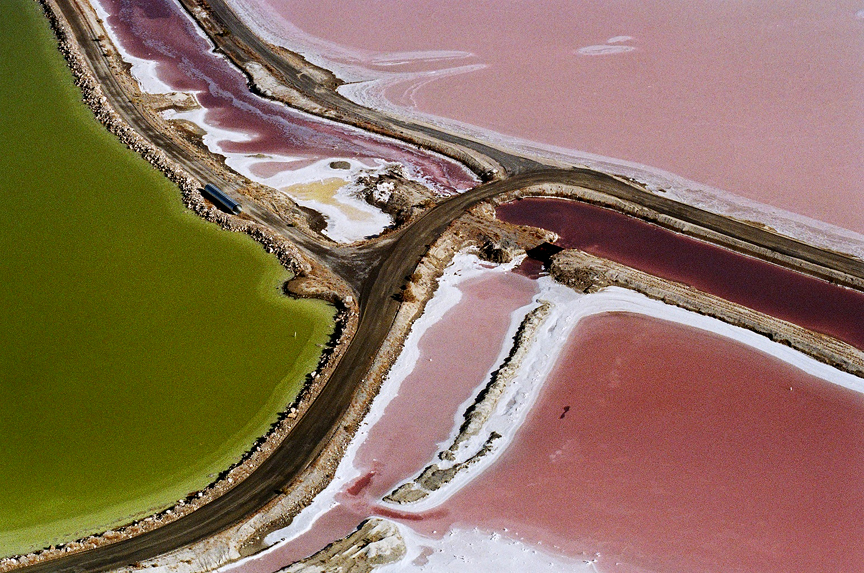
Looking through the photos, I kept thinking about both land art of the 70s, as well as satellite images. Did either of these aesthetics have a space in your mind, or am I just weird?
I am sort of defining what this project is all about throughout this interview, but really I want people to interpret it in their own way and hopefully take something away from it that inspires them. So however you interpret it is OK with me. I shot probably 95 percent of the images on an old Leica R3 SLR from 1976. In that sense, you are dead on!Could you have made this work anywhere else but the American Southwest?
At the time, no. I already had a feel for this area and a relationship with it. I've lived in Utah for over 11 years and really developed a strong connection to my surroundings, which is important. That being said, I think with my experience in Utah and nature within my projects I could shoot in another region, hopefully, and connect with it in a lot of the same ways. It definitely is something I think about.
I am sort of defining what this project is all about throughout this interview, but really I want people to interpret it in their own way and hopefully take something away from it that inspires them. So however you interpret it is OK with me. I shot probably 95 percent of the images on an old Leica R3 SLR from 1976. In that sense, you are dead on!Could you have made this work anywhere else but the American Southwest?
At the time, no. I already had a feel for this area and a relationship with it. I've lived in Utah for over 11 years and really developed a strong connection to my surroundings, which is important. That being said, I think with my experience in Utah and nature within my projects I could shoot in another region, hopefully, and connect with it in a lot of the same ways. It definitely is something I think about.
Advertisement
Why the name Bastard Child?
Once I shot Time of Nothing I felt as though that was the project that I was trying to achieve all along and I definitely cast aside the Bastard Child images, hence the name. Obviously, they're not born out of wedlock; they just became the photos that I didn't want to show and in a way deemed them unworthy, which is kind of what happened to bastards back in the day. Anyway, I realized as I stepped away from the images and came back to them that they have meaning and beauty and reflect something that I truly love.Jim's work is currently showing at Deichtorhallen House of Photography in Hamburg, Germany and the Utah Museum of Contemporary Art in Salt Lake City. Bastard Child is available for purchase at Dashwood Books in NYC of by contacting Jim directly. @christianstormMore from Jim Mangan:Color'dBeduTerram Tenebrosam
Once I shot Time of Nothing I felt as though that was the project that I was trying to achieve all along and I definitely cast aside the Bastard Child images, hence the name. Obviously, they're not born out of wedlock; they just became the photos that I didn't want to show and in a way deemed them unworthy, which is kind of what happened to bastards back in the day. Anyway, I realized as I stepped away from the images and came back to them that they have meaning and beauty and reflect something that I truly love.Jim's work is currently showing at Deichtorhallen House of Photography in Hamburg, Germany and the Utah Museum of Contemporary Art in Salt Lake City. Bastard Child is available for purchase at Dashwood Books in NYC of by contacting Jim directly. @christianstormMore from Jim Mangan:Color'dBeduTerram Tenebrosam
